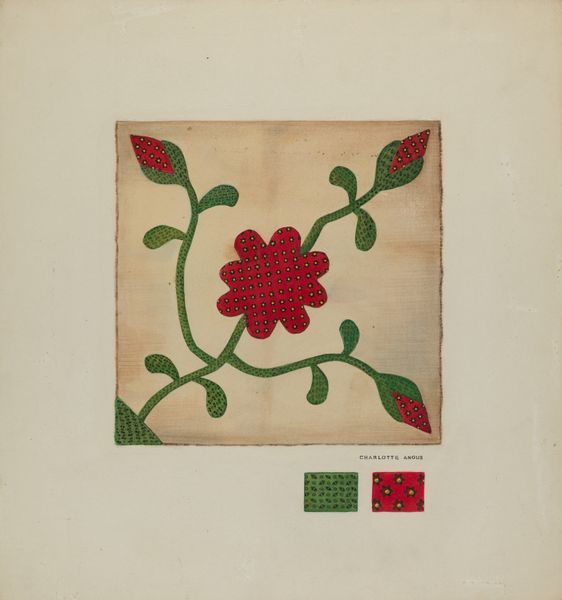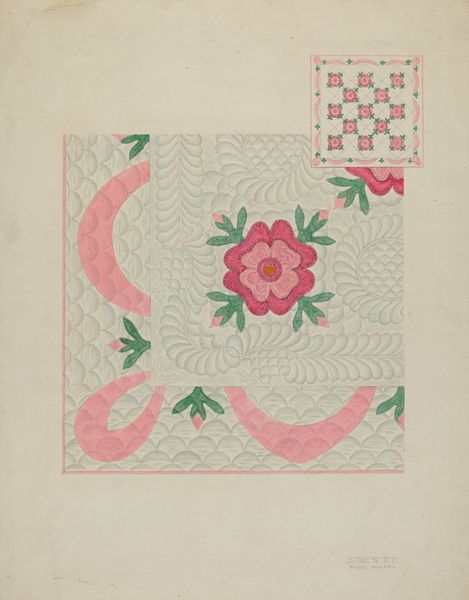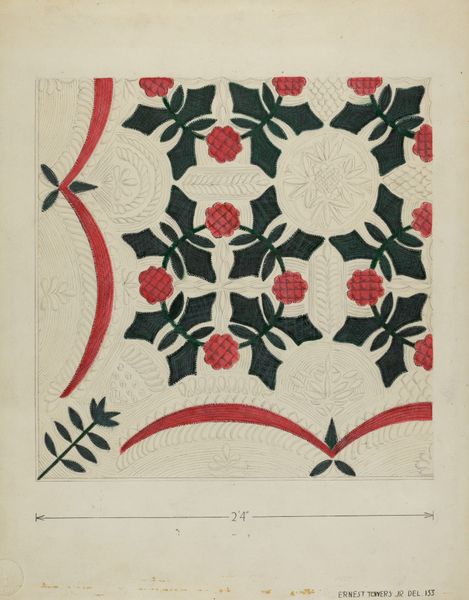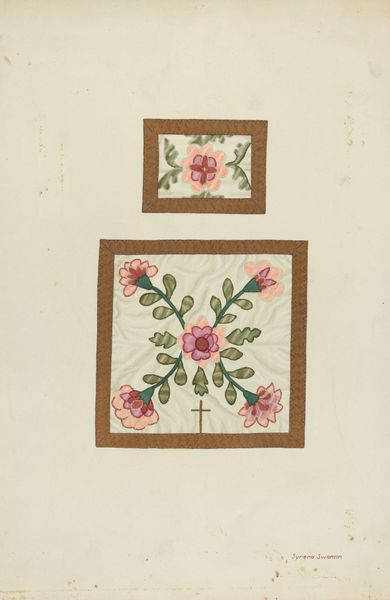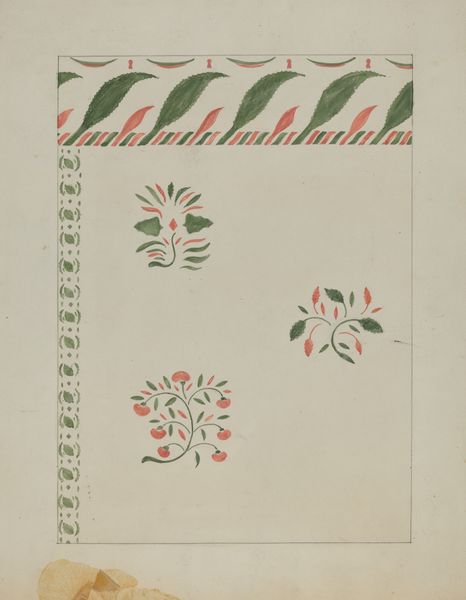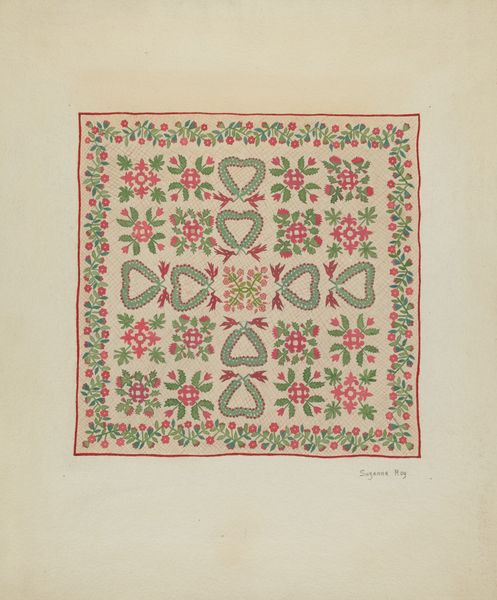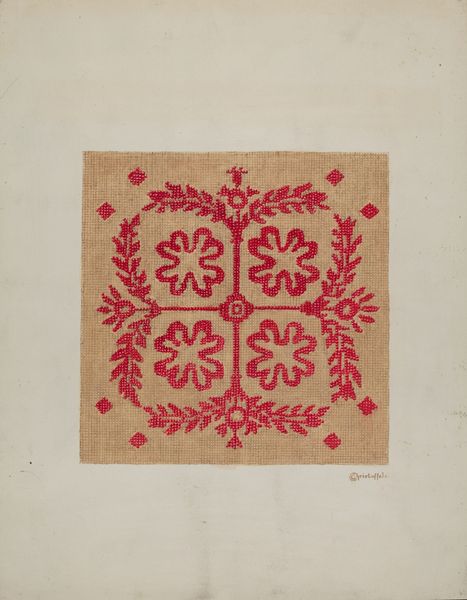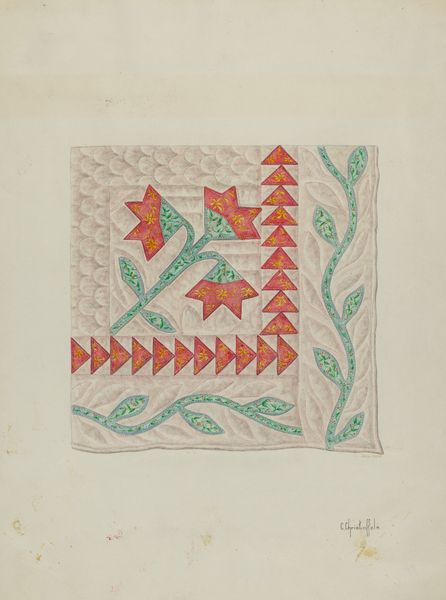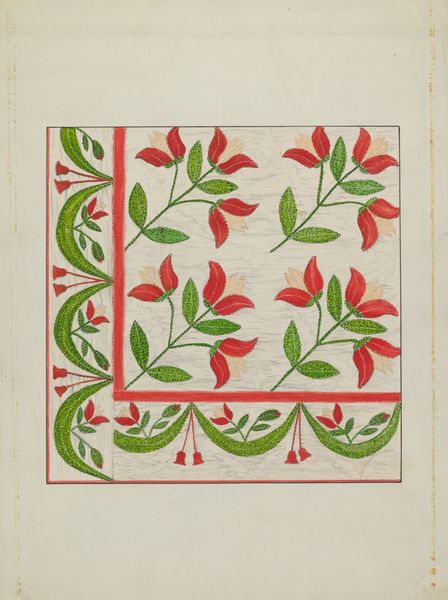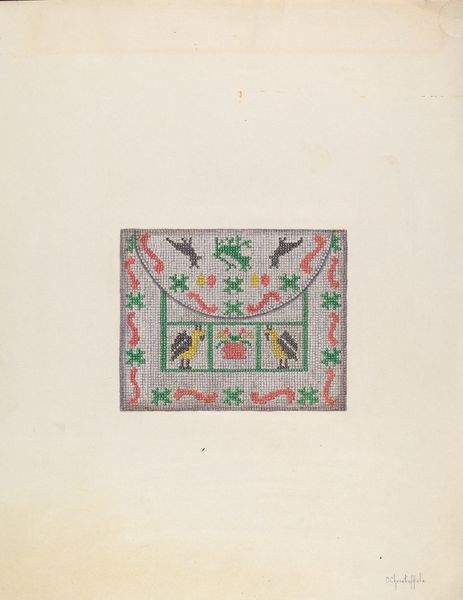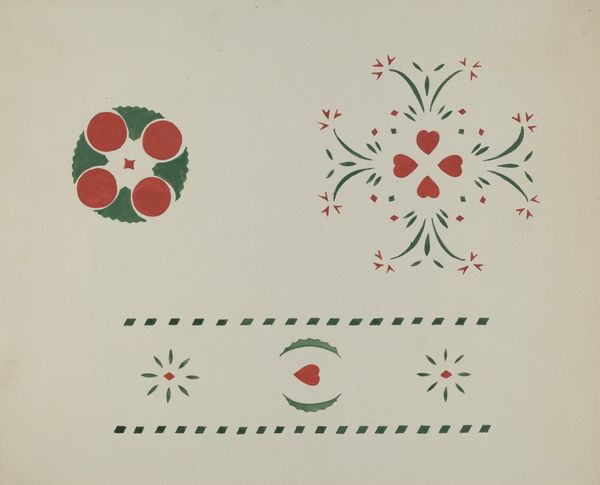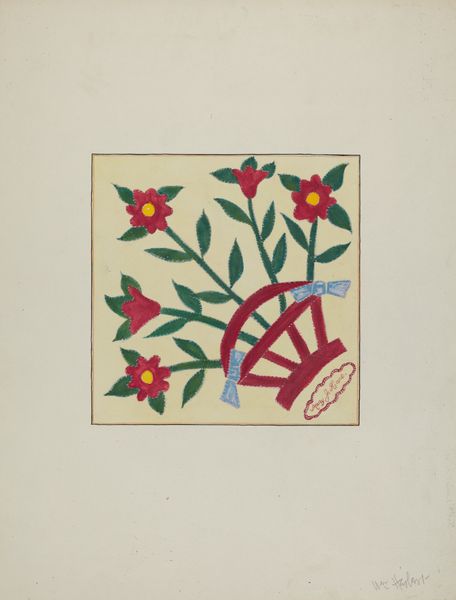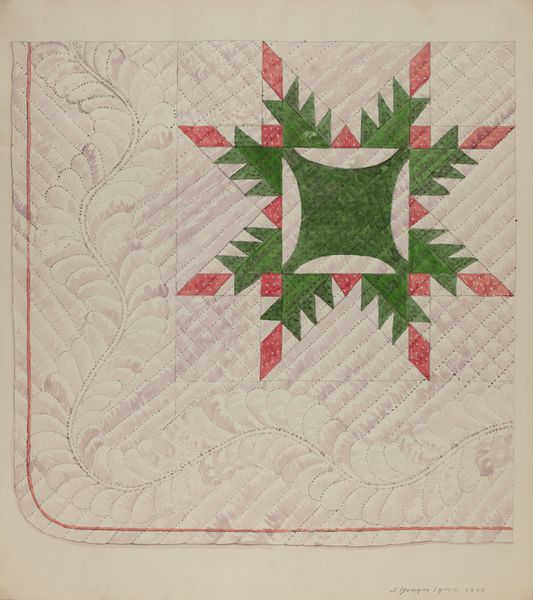
drawing, paper, watercolor
#
drawing
#
paper
#
watercolor
#
folk-art
#
decorative-art
Dimensions: overall: 32.2 x 23.2 cm (12 11/16 x 9 1/8 in.)
Copyright: National Gallery of Art: CC0 1.0
Curator: This watercolor drawing on paper is titled "Pieced Quilt." It's dated sometime between 1935 and 1942. Editor: The first thing I notice is the visual texture, which, although on flat paper, creates this sensation of a soft, homespun object, a real quilt. It's remarkably comforting, don’t you think? Curator: Absolutely. The visual of folk-art connects directly to themes of community and labor. Think about the history of quilting circles, particularly within marginalized communities, and how they functioned as spaces of resistance and collective care. Editor: Yes, the central motif of a stylized flower certainly draws from a deep well of symbolic imagery relating to women, nature, and domesticity. I am also struck by the handwritten word “Mother” inside of it. What does that symbolize in your opinion? Curator: Considering that the likely creator was a woman during a time of immense social and economic upheaval, inscribing "Mother" speaks to a reclamation of power within the domestic sphere, almost in defiance of broader societal limitations placed on women at that time. It reclaims the value in caring for a home and community. Editor: It really brings up interesting thoughts of generational legacy and the passing-down of cultural knowledge, through women, doesn’t it? It speaks to family histories being embedded in this artform. Curator: Indeed, by understanding the historical context, we begin to read beyond the quaint exterior and understand the radical, yet subtle, ways women asserted agency and built solidarity. Editor: Thinking about symbols and context, it's remarkable how much history is stitched—or, in this case, painted—into such seemingly simple designs. I never imagined a simple image could conjure up such complexity. Curator: Ultimately, artworks such as “Pieced Quilt” offers vital opportunities to understand multifaceted histories, both artistic and sociopolitical, from a perspective often marginalized in mainstream narratives.
Comments
No comments
Be the first to comment and join the conversation on the ultimate creative platform.
